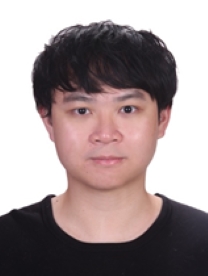Tutorial Speakers

Weizhi Meng
Technical University of Denmark
Dr. Weizhi Meng is currently an Associate Professor in the Department of Applied Mathematics and Computer Science, Technical University of Denmark (DTU), Denmark. He obtained his Ph.D. degree in Computer Science from the City University of Hong Kong, Hong Kong SAR. Prior to joining DTU, he worked as Research Scientist in Institute for Infocomm Research, A*Star, Singapore. He won the Outstanding Academic Performance Award during his doctoral study, and is a recipient of the Hong Kong Institution of Engineers (HKIE) Outstanding Paper Award for Young Engineers/Researchers in both 2014 and 2017. He also received the IEEE ComSoc Best Young Researcher Award for Europe, Middle East, & Africa Region (EMEA) in 2020. His primary research interests are blockchain, cyber security and intelligent technology in security, including intrusion detection, AI security, IoT security, biometric authentication, and trust management. He serves as associate editors / editorial board members for many reputed journals such as IEEE TDSC, as well as chair for various international conferences such as ACM CCS’23 and ESORICS’22. He is an ACM Distinguished Speaker.
Tutorial Title
How to Write a Good Scientific Article: An Easy Start
Tutorial Abstract
The writing of scientific articles plays an important, even crucial role for paper acceptance in conferences and journals. That means, a good technical article can be easily rejected due to a poor organization and writing aspect. To make a good scientific article, the writing should be factual, concise and evidence-based. In the literature, there are many guidelines and instructions on this topic, while with the advent of more advanced tools such as ChatGPT, the writing skills can be extended. This tutorial will focus on how to write a good scientific article based on the current state-of-the-art with examples. Some good practices will be shared as well.

WANG JUNJIE
Waseda University
Junjie Wang is a Ph.D. student at Waseda University, affiliated with the Real Sakai Lab in the Department of Computer Science and Engineering. He is focused on developing AI/Human-AI Interaction systems by leveraging diverse perspectives. His research areas include Multimodal Representation Learning (e.g., VQA, Text-to-image, Multimodal Pre-training Strategies, Multimedia Recommendation), Natural Language Processing (e.g., Language Model Training, Zero-shot NLU), and Training large models (e.g., Tuning deep models with more than 10B, employing the large models on real-world applications)
Tutorial Title
Large Models bridge the Digital-Real World Gap: from Understanding to Generation
Tutorial Abstract
In recent years, both the academic and industrial communities have witnessed a remarkable revolution in the field of large models. These models have exhibited significant advancements in addressing tasks related to understanding and are progressively tackling challenges in generation tasks as well. Traditionally, smaller models were employed to map real-world content into the digital realm. However, their limited capacity hindered their ability to address this challenge effectively. With the advent of large models, characterized by an increased number of parameters, a significant shift has occurred. These models have demonstrated remarkable potential in bridging the gap and achieving a more seamless interaction between the digital and real worlds. The journey from understanding-focused tasks to generation-oriented tasks has entailed a transformative process, characterized by refined training strategies and parameter adjustments. The training methodologies and parameter tuning techniques have undergone groundbreaking changes, shaping the model's ability to bridge the gap between understanding and generation tasks. These pivotal adjustments in training strategies have propelled large models to embrace the challenges of generating content that aligns closely with real-world contexts. This tutorial will focus on a comprehensive overview, delving into the training strategies and the intricate process of transitioning from understanding tasks to generation tasks. Let’s run to the new era.

